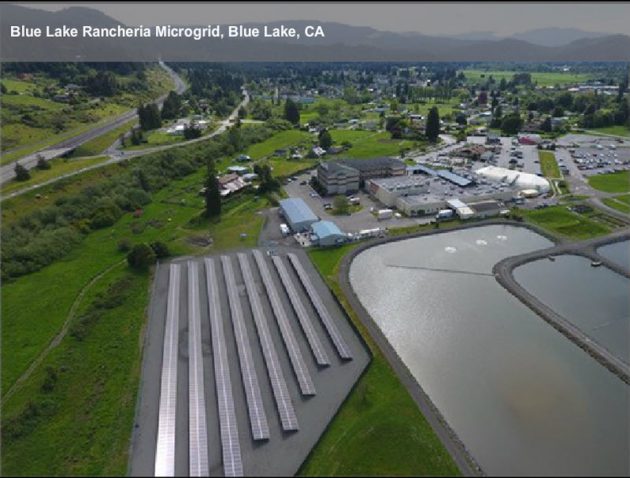It all started with the earthquake that struck the Fukushima region of Japan in 2011. The resulting tsunami flooded coastal regions of Humboldt County in Northern California.
People seeking to escape the flood waters sought refuge at the Blue Lake Casino and Resort Hotel owned and operated by the Blue Lake Rancheria Native American tribe, which has a total of 50 members.

The tsunami made the tribe realize how vulnerable they were to power outages. It was the needed wake-up call.
So the tribe decided to build a microgrid to meet their own energy needs with the money they made from the 102-room hotel and casino.
With the microgrid, the tribe saves $200,000 a year in utility costs and reduces its carbon footprint by 200 tons a year. It’s such a success that the tribe is adding more solar panels. The solar array covers about 2 acres.
PG&E blackouts best tests for the microgrid
Last fall, Pacific Gas & Electric rolled blackouts. Overnight, the casino and hotel became the place that local hospitals, newspapers, and governments turned to during the outages.
The hotel conference room became a newsroom, hotel rooms became hospital rooms, in overall, the tribe helped more than 10,000 people or about 8% of the population of Humboldt County.
The tribe just looked like genius for what it had done.
Cope the past with the future
The home of Henry Stern, a member of the California Senate was burned during the Woolsey Fire in 2018. He then introduced a bill that would make it easier for private citizens to create microgrids, which should take effect in December 2020. Too bad that’s after the Fire season in California!
But the extent to which microgrid owners can share their electricity with others isn’t clear. They are currently mot allowed to use existing transmission lines to supply power to other customers nearby, primarily because private microgrids are not regulated by the state.
In some states, microgrids are allowed to sell electricity to others, but only when power to the local grid is unavailable, like in the case of the tribe. They become a critical backup strategy, especially for rural communities and also helps those who want to construct a microgrid to pay for it.
The future of microgrids?
Microgrids are a tool, they have a role, and they must be one of many things we have to look at. But they are not a panacea.
The governor’s office has to create a new regulatory framework for microgrids to make sure all customers are served as some residents of the state could find themselves locked out of local microgrids, when the main grid is blacked out.
Microgrids are important as shown in the example above. And now they have to be integrated into the existing utility grid in a fair way to all participants.













“The governor’s office has to create a new regulatory framework for microgrids to make sure all customers are served as some residents of the state could find themselves locked out of local microgrids, when the main grid is blacked out.”
So… I guess Californians believe that it’s better for everyone to suffer equally, rather than let some citizens purchase more reliable power.
Socialism at it’s finest.